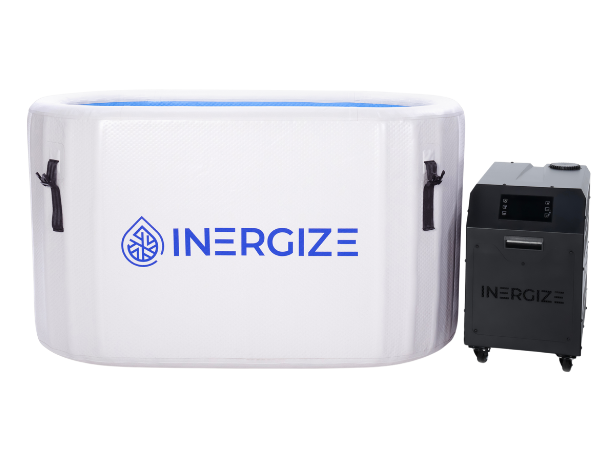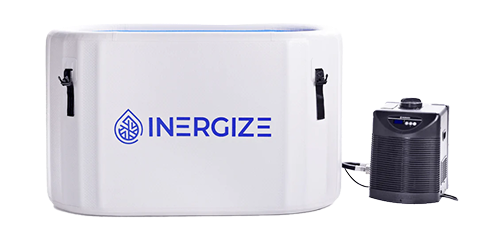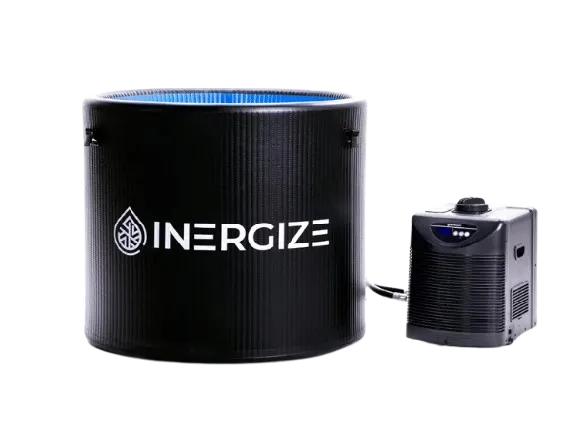Wellness Benefits of Cold Plunges for Your Body & Min
Cold plunges, also known as ice baths, have become a trend that extends far beyond elite athletes. What began in the Nordics as a traditional wellness exercise has now become a global wellness movement. This blog post discusses the proven benefits of cold plunges guided by recent scientific findings and more.
The Mental Health Benefits of Cold Plunges
One of the key areas of your wellbeing is mental health, and cold plunges have proven effective in addressing issues like anxiety, stress, and more. Let’s take a closer look at these benefits and the science behind them:
-
Cold Plunging for Anxiety & Stress Reduction
Having a cold plunge regularly is a proven way to reduce stress and anxiety (in addition to other medical remedies for severe cases). The cold plunge experience activates your parasympathetic nervous system. This helps your body shift from the so-called “fight-or-flight” state that causes anxiety to the “rest-and-digest state.
Recent scientific research has reinforced the effectiveness of cold plunges in anxiety and stress relief. For instance, one Finnish trial that paired psychotherapy with cold water immersion showed participants having less anxiety and better emotional regulation.
-
Enhancing Mood and Resilience

Immersing yourself in cold water boosts your mood by triggering the release of β‑endorphins, norepinephrine, dopamine, and serotonin. The release of these chemicals enhances mood by interacting with your brain’s reward pleasure centers to reduce pain and stress. It also improves emotional response to everyday challenges
-
β‑endorphins: These are natural pain relievers that are mainly released as a response to pain to activate your brain’s reward system. They give you a feeling of pleasure and wellbeing.
-
Norepinephrine: These are heavily involved in “fight-or-flight” response and are released in stressful situations. They enhance your focus and alertness, which leads to a positive mood.
-
Dopamine: This is a neurotransmitter associated with motivation, pleasure, and reward.
-
Serotonin: Serotonin is known for its role in mood regulation, overall wellbeing, and causing feelings of happiness. Its release after a cold plunge promotes feelings of calm and contentment.
There are solid ongoing scientific studies and recent findings behind the claim that cold water immersion has a direct, positive effect on mood and resilience. In one study, 33 adults showed improved alertness after a brief 5-minute cold-water dip.
-
Psychological & Mind‑Body Benefits
Cold plunging builds your mental resilience through deliberate discomfort. If you can pair it with breath control and mindfulness, it trains you to stay calm under physical and emotional stress. Many people report increased confidence, a sense of mastery, and improved daily stress management.
-
Cold Plunges for Improved Sleep and Focus
If you are constantly struggling with sleep and focus, cold plunging might be an effective at-home remedy with the right equipment (best cold plunges). The low temperatures in a cold plunge help balance your circadian rhythm, which in turn leads to deeper and more restorative sleep. Good sleep is great for your mental health.
Research has indeed shown that post-plunge parasympathetic activation caused by cold water immersion helps reset sleep cycles. Other systematic reviews have proven improved sleep quality and life satisfaction associated with regular cold-water exposure.
The Physical Wellness Benefits of Cold Plunges
In addition to the mental benefits you can get from regular cold plunging, the practice also comes with numerous benefits to your physical body. Here are some of them:
-
Aiding Muscle Recovery and Reducing Soreness
A cold plunge restricts your blood vessels to decrease metabolic activity, which in turn reduces swelling and tissue breakdown. This action is perfect for your post-workout muscle recovery. It also means less muscle soreness and pain. Immediate post-exercise immersion also speeds fatigue recovery and reduces soreness.
-
Inflammation and Immune Response

A cold plunge initially spikes inflammation, which is a stress response that can enhance long-term resilience. At the same time, the immune response associated with cold water exposure has been linked to decreased sick days for active athletes. However, this comes as a result of regular, consistent exposure.
-
Improving Circulation, Metabolism & Skin Health
Cold water plunges activate your brown fat, which in turn burns energy to generate heat. While not a magic remedy, regular cold plunging can, technically, help with your weight loss or weight regulation journey.
At the same time, cold water therapy helps contract your lymph vessels for better circulation to support cardiovascular health. It also helps in removing waste and toxins from your body in a more efficient manner.
For your skin health, regular cold-water immersion helps tighten your pores and hair cuticles, which leads to clearer and shinier skin. Tightening your hair cuticles also results in stronger, healthier hair!
Table: How Cold Plunges Improve Wellness (In Summary)
|
Mechanism |
Description & Benefit |
|
Cold Shock Response |
Slows heart rate, redirects blood flow to vital organs |
|
Hormone Surge |
Triggers dopamine, norepinephrine, serotonin, β-endorphins ( |
|
Vasoconstriction & Vasodilation |
Reduces swelling, flushes toxins, promotes circulation & thermogenesis |
|
Immune Adaptation |
Short-term inflammation leads to long-term resilience |
|
Neuroplastic Adaptation |
Repeated stress exposure builds emotional resilience |
Safety and Best Practices for Cold Plunging
There are many upsides to adopting a regular cold plunge routine, but you need to do it right and safely. Here are some guidelines you should follow:
Temperatures and Timing
The ideal cold plunge temperature for most people is between 10°C to 15°C (50°F to 59°F). This range gives you all the benefits (like inflammation reduction and anxiety relief) without shocking your system too hard.
If you are a beginner to cold plunging, start with a 30-second to 2-minute plunge. Get out if it starts feeling too uncomfortable. You risk hypothermia or straining your heart if it’s too cold or you stay in too long.
Here is a starter plan for beginners to cold plunging:
|
Day |
Cold Exposure |
Time |
|
1–2 |
Cold shower (legs only) |
30 seconds |
|
3–4 |
Full cold shower |
1–2 minutes |
|
5–6 |
Cold plunge (legs only) |
1 minute |
|
7+ |
Full cold plunge |
1–3 minutes |
Be Careful Post-Exercise
It’s not recommended to cold plunge immediately after an exercise or workout as this can reduce muscle growth. Instead, wait for one to two hours after strength training before you get into the cold plunge.
In Conclusion: Is a Cold Plunge Worth It?
When you do it safely, cold plunging offers many benefits for your mental and physical wellbeing. Ready to start with cold plunging? Take the plunge with the Inergize Cold Plunge Tub and elevate your wellness routine today!





